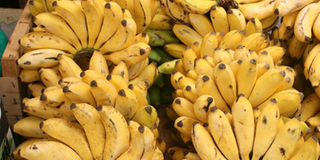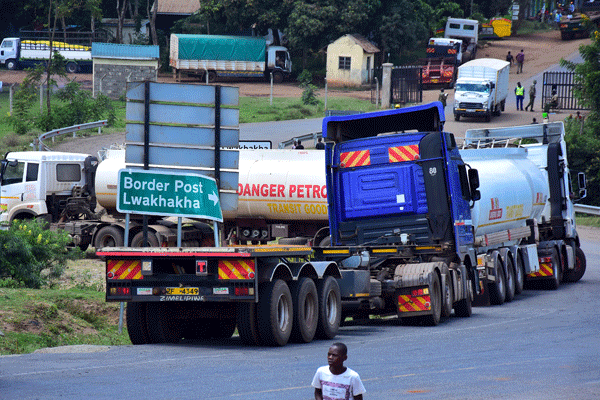Prime
Process bananas to stave off poverty

Uganda has a comparative advantage regionally because it is the biggest grower of bananas. Photo by Faiswal Kasirye.
Hundreds of Ugandan banana farmers will have a reason to smile if the government fully develops the commodity for the export market. The Trade Ministry together with the Uganda Export promotion Board (UEPB) have singled out three banana species; Apple Banana (Ndiizi), Cavendish (Bogoya) and Plantain (Gonja) which will be added value.
This initiative is aimed at increasing value addition on all the banana types or species grown in the country among which is Apple Banana (Ndiizi), Cavendish (Bogoya) and Plantain (Gonja).
In an interview with Prosper, Mr John Lwere Uganda Export Promotion Board (UEPB) Trade Promotion Officer explains: “We have designed a project targeting dried fruits – which includes bananas.”
Lwere explains that the project will mainly focus on making juices starting at the household level; to increase farmers’ incomes. Beside UEPB’s efforts to develop bananas, there are other value addition initiatives towards the same like the Uganda Industrial Research Institute’s ‘Vacuum Sealed Matooke.’
According to UIRI, this initiative targets the ‘Ready-to-Eat’ market segment which might not be interested in the raw green products. Already, matooke value addition is being promoted through the Presidential Initiative on Banana Development (PIBID). Banana (Tooke) is being developed.
“We hope that when our equipment from German is fully assembled production will roll out,” Mr George Wilson Kulaba, PIBID Coordinator Research and Development.
Globally, the banana is the fourth most important food crop after rice, wheat and maize but in Uganda, it is the most important food crop as indicated by production output, acreage, consumption levels and priority ranking by stakeholders.
Annual production is estimated at 8.45 million tonnes, accounting for 15 per cent of total world banana or plantain output.
75 per cent of Ugandan farmers grow the crop on 1.5 million hectares, accounting for over 38 per cent of utilised arable land. The bananas are mainly produced for local consumption, with an estimated per capita consumption of over 300 Kilogrammes, the highest rate in the world.
Uganda’s comparative advantage is that banana is one of the most important food security crops in Uganda. Areas where banana production is a main activity are rarely hit by famine.
“This is because the plant’s all-year-round fruiting habits coupled with the high yield to ensure continuous supply of dietary carbohydrate,” Lwere adds.
Furthermore, the perennial nature of the crop makes it the least affected by drought or social instability. Above all, it is potentially a high yielder and the least labour demanding food to produce in the long run. He says: “These attributes make the banana a crop every Ugandan farmer longs to have to ensure household food security.”
Growing annual crops, or keeping money for purchasing food have all proved unreliable in peasant communities of Uganda because of difficulties of keeping the harvest or money under pressure from demands such as school fees. Every farmstead in Southern Uganda tries to grow banana for continuous supply of food or income.
The crop is spreading fast in other parts of Uganda and across the East or Central Africa region for the same reasons.
Exports
In terms of rural revenue, banana is the second most important cash crop in Uganda-after coffee, contributing up to 22 per cent of National Agricultural rural revenue. This is further supported by data on returns to family labour which indicated that in South Western Uganda, banana is the second best crop, after coffee.
Recent reports from UEPB indicate that Uganda exported 761.3 tonnes of bananas and Plantains which earned the country $255,441 (Shs638 million); this showed an increase in both volume and value. Previously, in 2010, the country exported 426 tons worth $129,000 (Shs322 million).
Mr Lwere said that UEPB intends to identify the export markets for both fresh and value added products. “We have had a number of opportunities – especially for Apple Banana and Cavendish – identified,” Lwere adds.
However, there are issues to do with production capacity and meeting the buyer quality requirements in the desired quantities.




